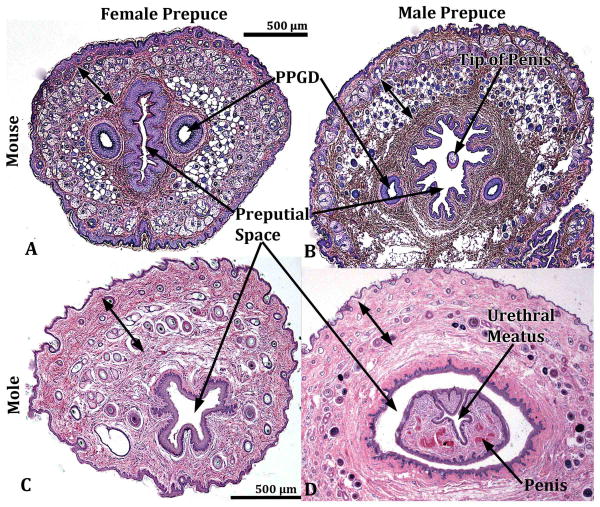Figure 2.
Transverse sections of the external genitalia of male and female mouse (A & B) and broad-footed mole (C & D). See red arrows in figure 1 for the approximate level from which the sections were taken. The male and female perineal appendages illustrated grossly (Fig. 1) and in transverse sections (2A-D) are indicative of the prepuce by virtue of having the following features: (a) an absence of erectile bodies, (b) covered externally by a hair-bearing epidermis, (c) lined by a non-hair-bearing inner epithelium defining the preputial space, which in the case of males (B & D) houses the penis. Double-headed arrows denote hair follicles. Preputial gland ducts present in mice are labeled PPGD.

